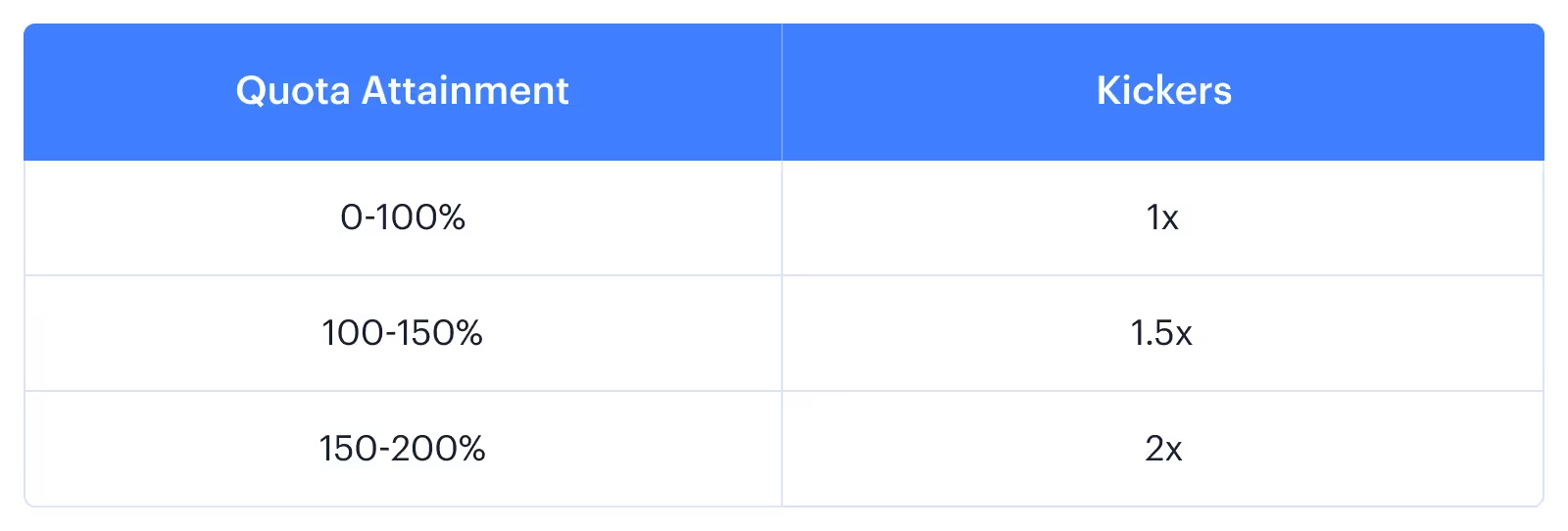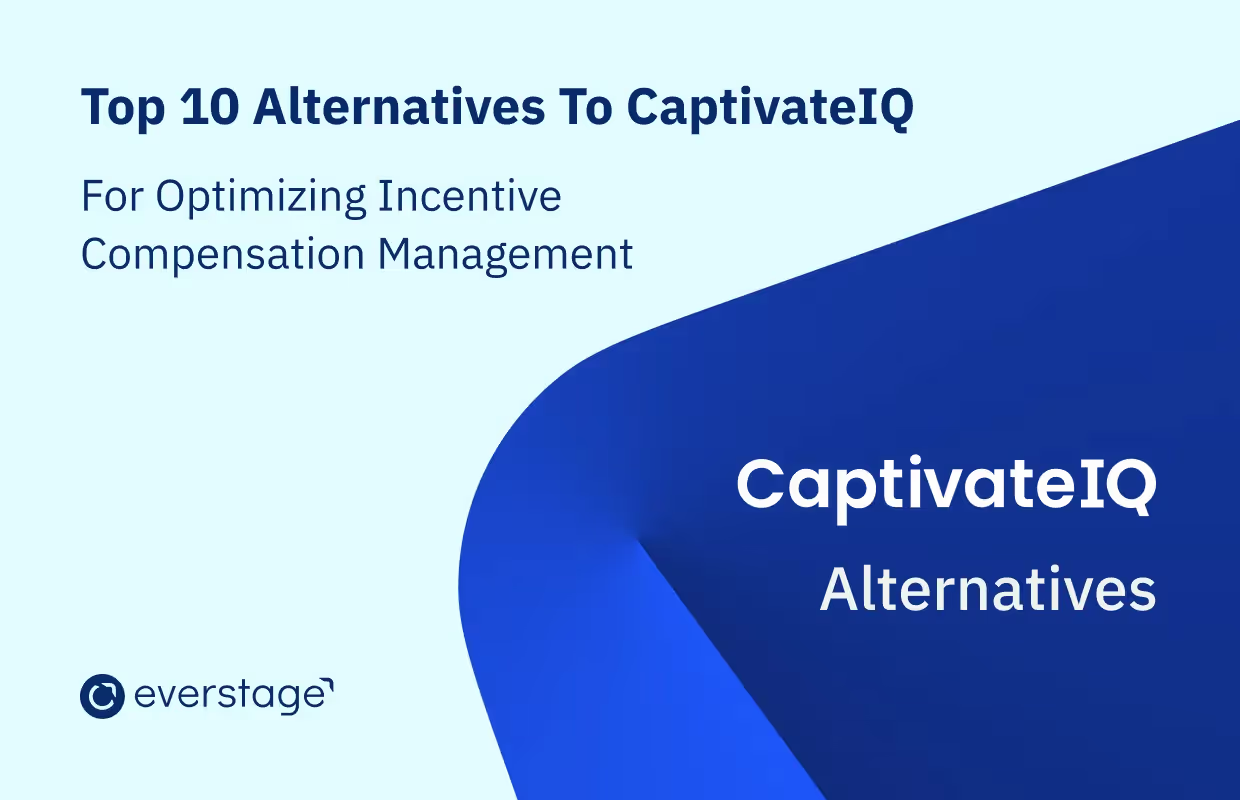Commission plan design for SaaS salespeople in 2025 requires aligning incentives with revenue growth, retention, and expansion while balancing business goals and talent attraction.
- Identify key compensation components and factors influencing commissions to avoid confusion.
- Set clear objectives—recurring revenue, contract length, deal size, and retention.
- Use a data-driven approach to ensure competitiveness and effectiveness.
- Test and refine plans to match both business needs and sales team motivation.
Creating a compensation plan can turn out to be rocket science. From finalizing the components that you want to include in the plan, to deciding the factors that influence your commissions, it can be a painstaking process.
To make things worse, you aren’t going to attract the best talents for your sales team if you don’t get your comp plans right. We get it. It isn’t easy. But there’s a way out.
Let’s deep dive into how you can create a well-defined compensation plan.
You can get started with creating a compensation plan by considering the below factors. Obviously, you’ve to decide on which ones to include in your plan and ignore the ones that don't fit in your vision.
Determine Your Goals
The very first step in developing a compensation plan is to define your objectives as an organization. Depending on where you stand, what you intend to achieve, and what your priorities are, you can finalize your goals which can be a combination of a few of the below ones.
Primary Business Objectives
- Increasing recurring revenue
- Increasing cash flow
- Signing longer-term contracts
- Increasing average deal size
- Growing your expansion revenue
- Improving your retention rate
Secondary Business Objectives
- Attracting new prospects
- Minimize expenses
- Drive sales for a particular product
- Reduce the average discount size
- Increase gross margins

* You have to understand your economics, and you have to understand what drives people. Then you have to test your way into what makes the most sense, because the human element/reaction can't be modeled.
* You need to use a data-driven vs gut instinct approach. Have a deep understanding of the competitive environment and create a plan that folks would choose if provided a choice.
Define the On-Target Earnings & Quotas
OTE (On-Target Earnings) is nothing but the amount your reps earn annually, which includes base pay and variable pay. This can differ based on the role, the region you operate in, and your industry type.
While there isn’t an easy method to determine your quota, they’re generally fixed at 4x-6x of OTE.
Choose the Right Commission Plan Type
Again, there isn’t a right or wrong plan, it all depends on your business objectives, your resources, and how you want to compensate your reps. Below are two different types of commission plans.
Commission Rates Based Plan
This is one of the most commonly used commission plans where the reps are compensated with a flat commission % that’s part of their deal value, which will be between 8 - 12 % on average.
Here’s an example: Let’s consider that your rep has an OTE of $120K at an annual rate, with a fixed pay of $72K. The variable pay is $48K, and you’ve set their quota as $600K per year. Their commission rate is 8% on OTE.
But here’s the thing: What happens once they attain their quota? Will they have any incentives for closing deals after it? If the answer is a ‘No’, then you’ve missed the trick. Now, this is what you can do to keep your reps motivated to close even more deals post quota attainment. Increase their commission rates once they achieve their target. Considering the above example, their commission rates can be 12% once they reach $600K. This cycle can continue as long as your reps can reach newer milestones.

Quota Attainment Based Plan
This type of commission plan is chosen in situations where the ‘Commission Rates Based Plan’ cannot be used. Below are a few such scenarios:
#1 - When you want to reward your reps for a non-revenue goal, like increasing the number of qualified leads.
#2 - When you have reps operating in different regions in a global sales model, where your revenue is measured in dollars, but not your commissions.
In these cases, you calculate the commissions by multiplying the quota attainment with the incentive pay for the particular period (monthly or quarterly).
Additionally, you can use tiered kickers to motivate your reps once they attain quota. Below is how you can do it.

Draws Against Commission Plan
Draws are either an advance amount that’s paid to the sales reps which have to be repaid from the commissions they earn, or the guaranteed amount that’s paid during certain scenarios.
There are two main draws against commission plans, which are explained in detail here.
When Should You Pay Commissions to Reps?
Your reps are either paid for booking deals or after you collect the cash from your customer. But which of these two should you go ahead with?
That’s a difficult question, and there isn’t a straightforward answer.
You cannot wait till you collect cash to compensate your reps. They may feel demotivated, and may even leave you for a better offer. In this case, you can use clawbacks, so that if your customer churns, your reps lose their commissions. This will also motivate your reps to get customers who really consider using your product.
On the other hand, your reps do feel pumped up when you pay them after a deal is signed. The downside to this is that, if there is a delay to make the first payment, it can create cash flow problems.
Compensating for Recurring Revenue
How do you want to compensate your reps when they close a monthly deal? Do you want to incentivize them every month, or every year? It is indeed a complex situation, which you’d face often in the SaaS business. But let’s look at the possible solutions.
In such scenarios, the reps are either paid upfront based on the total contract value or over time depending on the revenue received. The latter strategy can be a preferred one for companies since you’d be able to pay from the actual revenue received, and your reps will be focused on bringing in customers who’re a good fit for your organization, which can reduce the churn rate.
Other Metrics to Consider
Rewarding non-revenue goals can strengthen your sales process and can make your reps more focused on going the extra mile. But, these metrics are considered only if your reps attain their quota.
You don’t have to add too many of these metrics though, which will eventually make the plan more complex. Opt in temporary SPIFF programs to address short-term behavioral changes.
Flat bonus: When your reps reach their quarterly goal, reward them with a flat one-time bonus, which can also be a percentage of their incentive plan.
Contract tenure bonus: A multi-year contract is far better for your company than a yearly contract, and the right thing to do is to incentivize your reps if they bring in one. The advantages of such long-term contracts are that the churn rate is less and there’s a lot of scope for expansion.
Multi-product deals: If you have an array of products to sell than just one, then it’s sensible to create a special markup where your reps can close multi-product deals.
Final thoughts
We’d like to repeat what we said in the beginning: creating commission plans is complex. But here’s the thing, it’s your primary duty to make sure it’s as simple as possible. It must be easily understood by sales reps, and the variable part shouldn’t include too many elements. Do your research, analyze often, and make the necessary adjustments so that your plans keep bringing the desired results to your business.




.avif)
.avif)






